#Nationale Portland art
Photo
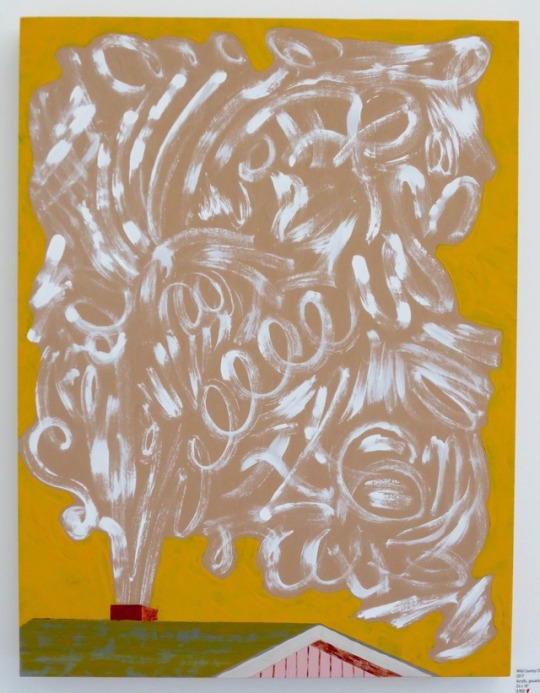
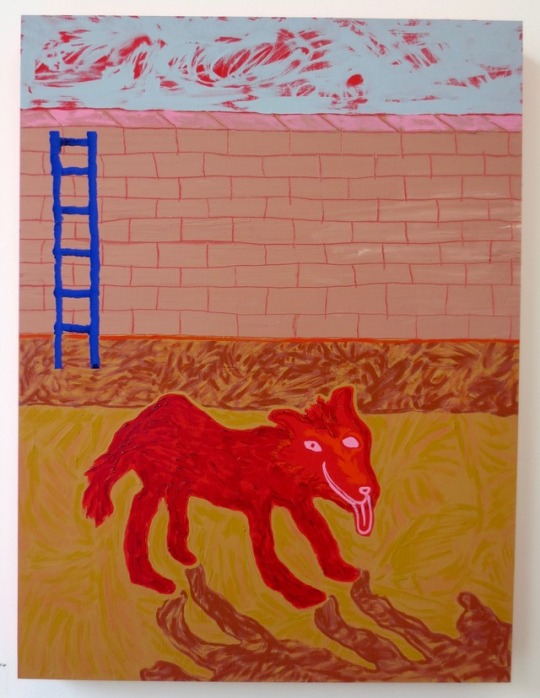

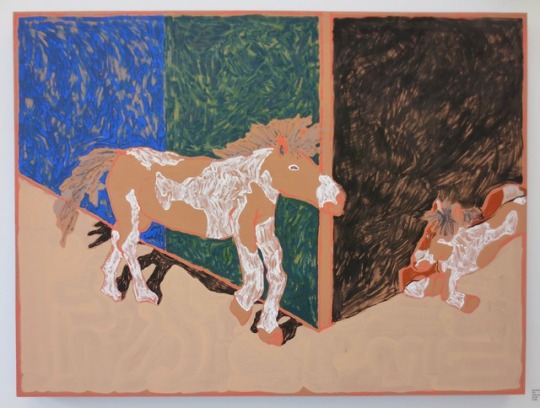
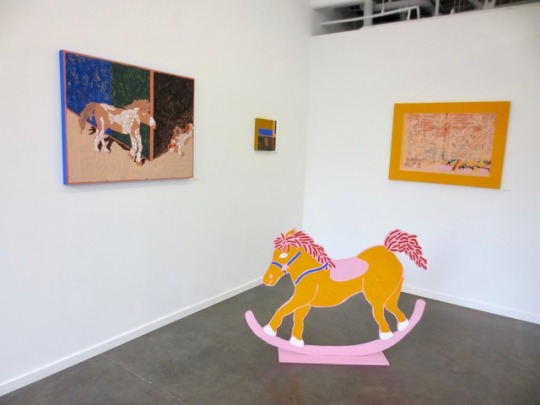

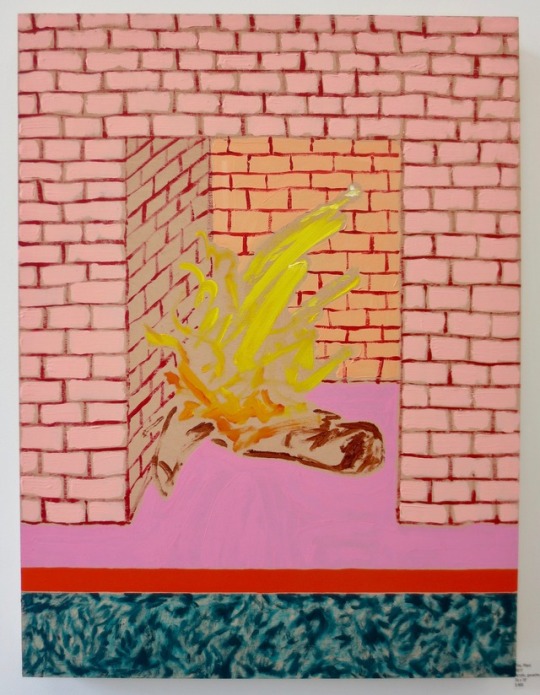
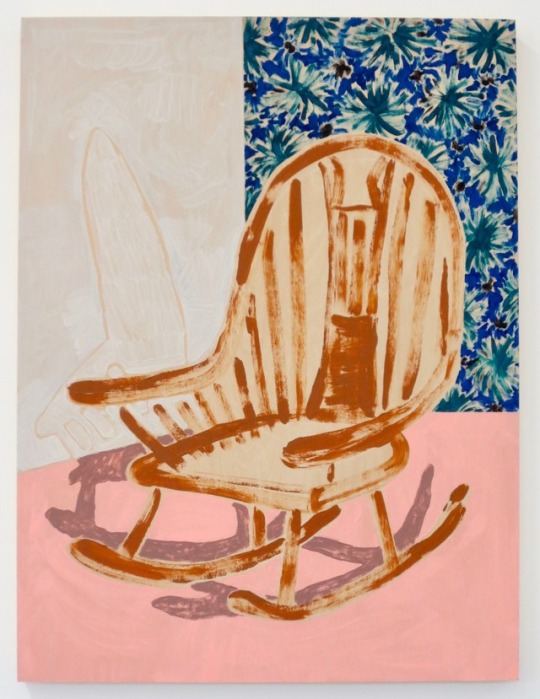
Annie McLaughlin: Brushing Out the Brood Mare’s Tale at Nationale
nationale.us
20 notes
·
View notes
Link
In the wake of Trump’s election, Brexit, and the growth of anti-EU populism, the placid doctrines of establishment politics are now being remade. But perhaps more significant is the absolute and utter collapse of Western self-declared “anti-establishment” politics: the “socialist” left has proven to be one of the earliest casualties. The cresting wave of left-wing populism turned out to be illusionary; as it receded, its only lasting legacy was bitter acrimony, rotting political hopes, failed analyses, and stranded careers in academia and the NGO-world.
This is not to say that “the left” has lost. Only the romantic narodism of the 21st century left has truly died: the belief that “the people,” or “the working class,” can be relied upon in the political struggle. One need only consider the riots going on even now in the US, or the one of the many institutional revolutions playing out (at foundations, newspaper editorial boards, and academia), to recognize that the movement is still in good health. But after the disappointments of late-2019 and mid-2020, those revolutions will no longer maintain any pretense of being waged by the people. They won’t even pretend to be waged for them.
…
The left may prefer to talk about a supposed “precarization,” of the college educated, and the right may be more comfortable talking about ”useless college degrees,” but neither side denies the facts on the ground: that for some time now, the West has been using a massive expansion of higher education to create a new class of functionaries—”knowledge-workers” and would-be managers—in numbers far in excess of what the labor market can or could absorb. Yet, it is only just now that we are seeing, with clear eyes, that this class of people (which, again, nobody denies the existence of) might begin acting as a class.
…
Rather than try to pin the blame on American television, or even social media, it behooves us to recognize that the conditions for this new “Springtime of the Managers” are just as ripe in London and Berlin as they are in Portland and New York City. What we have now on the left and right—on both sides of the Atlantic—is an open and bitter class war. It is a conflict between a growing cadre of imperial lords and the peasantry they hope to subjugate; between the managers and petty nobility of the much-prophesied “knowledge economy” and those they aim to manage.
Just as few took the existence of this class of people seriously, no one took the existence of this class war seriously until recently. The left was forced to outright deny it because they were already on the side against the working classes, and any acknowledgment of that fact would destroy their legitimacy. What is East Germany, without Communism? Nothing; it is merely part of greater Germany. The left faced a similar dilemma, and so the charade, emptied of all class conflicts in favor of “cultural” ones, had to be maintained.
Meanwhile, a minority of left intellectuals have already begun jettisoning ideological ties to a people it no longer belonged to or recognized. In the UK, thinkers like Paul Mason diligently sought to replace workers with young (educated) people who have a smartphone as the natural constituency of the left. In the US, Nathan J. Robinson, the publisher of Current Affairs magazine, pleaded for the left to finally abandon Marxism and historical materialism in favor of couching its arguments in moral terms. These characters were, almost without exception, mocked and ridiculed. But time has vindicated them. It is now clear that they took heat not because they suggested a new and different strategy, but because they were advancing the end to the left’s doublespeak and doublethink. The left had long since abandoned the workers; Mason and Robinson were merely preparing the ideological contingency plan for when the workers would abandon the left, as has now well and truly happened.
In the leadup to the 2020 election, the right faced a different dilemma. For them, the class conflict they refused to recognize was internal. The Democrats, having fully consolidated its new political coalition between petty managers, Silicon Valley grandees, and a dwindling base of minority clients, could not only defeat the likes of Bernie Sanders, but also reabsorb all of the hammer and sickle-brandishing “revolutionary communists” back into the machine. Unfortunately for the GOP—as with the Tories in Britain and the Sweden Democrats or Rassemblent Nationale in Europe—the consolidation of “the ascendant” into center-left parties has left them stuck with the political leftovers: an entirely ad-hoc coalition consisting of disgruntled heartland workers, small business owners, and big business also-rans. For this reason, and in part due to the intellectual legacy of the Cold War, talk of actual class conflict comes at a very high risk for the right. Trying to unite the competing interests that make up the extant and potential base of the Republican party is nigh impossible. The Democrats—and the Western left in general—talk about culture rather than political economy because they know the makeup of their coalition, who their enemies are, and what their plan is. Republicans—and the Western right in general—talk about culture rather than politics because they know none of these things.
…
As a political cause, Black Lives Matter seems to thrive just as well among the surplus managers of Dublin as it does in San Francisco—never mind the complete incompatibility of the Irish situation with the American. Sweden, for example, never had a plantation economy nor a period of formal or informal Jim Crow rule. But this in no way impacted the formation of a Black Panther movement in immigrant-dominated suburbs. At first blush, the children of immigrants to Sweden—predominantly of Middle-Eastern descent—cosplaying as 60s-era Afro-American freedom fighters reads as a hilarious anachronism. But there is an institutional logic behind it: Sweden already has a state-funded patronage network geared towards “community organizers” in particular, but also the surplus professional class in general.
Behind most declarations of proletarian solidarity or racial justice, one tends to find repeated and urgent demands for the state to simply create more jobs. How do we solve the thorny issues of racial justice? By diverting more federal and state money to employing the various temporarily embarrassed aspiring commissars currently stocking the shelves at Target, of course! While the language of economic redistribution today maintains a veneer of proletarian radicalism (often eagerly assisted by various red-baiters on the right, as seen during the fairly anemic “Joe Biden will usher in SOCIALISM” run-up to the 2020 election), only the truly credulous could believe that demands for the state to directly and indirectly employ more and more college graduates—creating as many ideological commissariats as necessary to rescue them from the ignominy of having to work at Starbucks—merely represents some innocuous side effect of the political project as a whole.
A full accounting of the scope of the Swedish patronage machine is neither possible nor necessary in this essay, but it does serve as a valuable example. Most of the country’s patronage machine actually predates the class that currently subsists on it. The “one percent rule” which states that at least one percent of the budget allotted to new buildings or infrastructure must be paid to artists for the express purpose of creating art, is just one example. The Swedish Inheritance Fund, (Allmänna Arvsfonden) was established as far back as 1928, when the country abolished the automatic inheritance rights of cousins and other distant relatives in the absence of a written will or close family. Originally, the intention was that the state would use this newly “orphaned” money to fund the care of orphanages and related causes. The fund’s mission has expanded over time to the point where it now funds a great variety of overtly ideological causes—often with next to no oversight. As such, the fund has become controversial, especially in the eyes of the Swedish right.
The various incarnations of the “one percent rule” or the Inheritance Fund only scratch at the surface. On every level—state, regional, and municipal—myriad grants, privileges, subsidies and direct cash transfers are available, aimed at a heterogenous group of race hustlers, artists, activists, and academics. It hardly needs to be said that cultural minority status, or fluency in the shifting language of wokeness, is a strict and unavoidable requirement for those seeking to access these resources. The state also pays the salaries of many Swedish journalists, either directly (through the various public service channels) or indirectly, through massive distribution subsidies. Are you perchance a radical syndicalist on a holy quest to crush the capitalist value-form while also grinding the running dogs staffing the reactionary Swedish state into dust? Have no fear, that state will gladly subsidize both your salary and cost of distribution for your newspaper urging the workers to destroy capitalism! Even as larger and larger parts of Sweden succumb to deindustrialization and lack of opportunity, this money tap will keep flowing.
All of this is to say that there is a very real, non-ideological endpoint for many of the fervent demands coming from the Red Guards of the American cultural revolution. The state can take it upon itself to create and sustain an ever increasing number of jobs for the surplus elite generated by our universities. Moreover, even systems that were originally not intended to serve as patronage machines for surplus managers—such as a state fund for orphans—can easily be repurposed into a job creation program controlled by woke guild rules. Again, to reiterate: very few of our institutions that are now notorious as liberal-hegemonic patronage machines were created for that purpose; they were colonized. American conservatives should thus be very careful in their quips about “socialist Sweden,” given their own immediate future.
…
The left populist project is very much a project of social democracy for young professionals. Joe Biden’s electoral victory—such as it is—would have been impossible without the immense class solidarity and sense of purpose uniting the supposedly “ascendant” or “reality-based” half of America. (Drunk on victory, there is already talk of drawing up lists of people who in any way abetted the old regime.) They no longer feel any need to hide their power, or their plans for the future.
Broadly speaking, these surplus managers have two complementary goals: the above-discussed expansion of the social-democratic state, and the establishment of formal and informal guild protections and structures within the newly-expanded or pre-existing professional fields they hope to inhabit. Some characterize this secondary goal as one of ideological domination of the workplace, but this confuses the means with the ends. Put plainly, the ideas that are getting people fired today are not only empty of content, they are also constantly and arbitrarily changing. Compared to the often murderous totalitarianism of, say, a crusading religious fanatic, there is a distinct lack of object permanence at play here. The religious fanatic, obsessed with forcing everyone to bend to the True Faith, chooses his doctrine once and then sticks to it. But in the world of the woke, doctrine is ever-changing, and the commissars of today will gleefully sign your proscription sentence for holding opinions they themselves held only yesterday.
Yet, in this cultural revolution, the fickleness of its dominant ideas is an essential feature, not a bug. The point of this “totalitarianism” is not to force everyone to think correct thoughts at the risk of getting fired; it is to get them fired. Full stop. Like the medieval guilds of old Europe, surplus managers are threatened by the existence of a mass of people willing to do any job within their ambit that cannot be comfortably accommodated without inviting the pauperization of their entire profession. For the medieval guilds, guaranteeing that only a select few who could actually hope to become carpenters or glove makers had nothing to do with improving the economic efficiency of the towns, but rather to secure the living standards and social status of those carpenters and glove makers already in practice.
Guilds, unlike unions, are institutions meant to inflate scarcity. It is hard to imagine an American auto workers union threatening strike action in order to forestall Ford or GM from producing more cars. After all, more cars means more workers, means more potential union members, means more power for the union. The specific political opinions of any one worker does not factor into the basic arithmetic. For a guild, however, the arithmetic of power is very much concerned with the ability to discipline its own members, as well as raise barriers of entry into the workplace via social, cultural, or other grounds. For the union, having more members is (almost) always just a good thing. For the guild, it is a nightmare scenario. (Of course, exceptions exist. In some narrow vocations, unions maintain scarcity through licensing requirements and other means. But even then, the interests at play are economic, managing qualified labor scarcity for the benefit of its members.)
It is significant that the figure of “the boss” is imagined by these surplus managers as being evil not because he is a capitalist, but because his myopic profit motive or outdated personal morality is an obstruction to the creation of committees staffed by employees for the purpose of firing and disciplining other employees. Today, one can even be a millionaire capitalist while maintaining a properly anti-capitalist, revolutionary outlook, denouncing other companies that refuse to discipline their workers for ideological commitments.
…
To illustrate the hopelessness of any conservative or right-wing project which aims to somehow “shift the debate,” consider the way those same efforts played out on the left before the election. Take the case of Jacobin magazine’s recent article entitled, “Trying to Get Workers Fired Is the Wrong Way to Fight Racism.” Within minutes of its being published to Twitter, the article was inundated with angry and shocked reactions from mostly self-identifying socialists. The idea that bosses shouldn’t be trusted with the power to arbitrarily dismiss workers over allegations of racism produced a firestorm of controversy among the people who, we are supposed to believe, represent the vanguard that will lead those same workers into a revolution against those same bosses.
If this is just a modern expression of “Marxism,” then it has certainly come a long way.
…
Just as the Boston Tea Party looms large in the minds of Americans, the entrance of the black ships into Edo bay occupies a place of importance in the Japanese historical memory. It is seen as the moment in which the simmering social and political contradictions irrevocably boiled over. Neither the British monarchy nor the Japanese shogunate recognized what was happening until well after the point of no return. The fight against Trump has already forced such massive changes that the old social compact no longer exists. Silicon Valley has merged with the larger progressive machine, taking it upon themselves to guide (if not outright control) political discourse, picking political winners in a completely open and blatant manner.
The old order that was constituted in the US in the 90s depended on the separation not of church and state, but of the separation of civil servants, technical expertise, and scientific empiricism from politics. Without it, end-of-history liberalism lacks any legitimating mechanism. But it is precisely this separation that has just been destroyed; often violently and publicly. The election—with its artfully coordinated media blitz, the monumental failure of institutional polling (again), and the sudden about-face on the existence of electoral interference, is just the final swing of the knife against what remains of post-war Western liberalism.
This is not some trifling ideological point. The last year has seen very large institutional changes in the real world—huge cash transfers from business to various progressive NGOs, the embrace of political education in government institutions as a matter of course (briefly and ultimately meekly resisted by Trump’s executive order, now poised to return stronger than ever). On top of that, the US has seen a series of rolling purges of politically unreliable people from all positions of importance within academia, journalism, and similar sectors. Are those people going to suddenly be rehired now that Trump is gone, no harm, no foul? Will the alliances forged between progressive liberal causes and big business be voided, and all that money returned?
Even so, it is very much in doubt that many people actually want to go back. All these new alliances, all of these new technical and social instruments of political control and discipline, are far too useful for anyone to willingly give up. You can hear it clearly coming from congresswoman Alexandra Ocasia-Cortez: the tune for the future seems to be a mix of revenge and reeducation, not restoration. But since the deplorables are unlikely to whip themselves in penance, the reeducators will have to be trained, deployed, and (one would assume) amply paid for their work.
The class war is here. It will not go away on its own. After 2020, not even the staunchest anti-communist or “traditional conservative” on the right should indulge fantasies to the contrary. Donald Trump, whatever else one may say of him, was not defeated by ideas, but by a society-spanning managerial omerta, organized by a stunningly impressive (and frankly, terrifying) class alliance working together in total discipline.
In an era of elite overproduction, the only realistic means of sustaining the unsustainable elite’s social status and standard of living is by increasing the exploitation of the rest of the population; demands, taxes, and tithes levied against the two-thirds of America that does not attend college by the one-third that does. And so more institutions will be built, more money will be transferred from the undeserving poor to their educated superiors. Our media personalities, academics, and experts will continue the work of inventing new crimes for their gardeners, gig workers, and unemployed countrymen to commit, so that they might maintain this process of looting and extortion.
Those of us outside this coalition of the ascendant—whatever else we may lack in commonality—are now called upon to realize one very basic point: regardless of whether you call yourself a national conservative, a one-nation Tory, a part of Blue Labour, or a labor populist, this class war cannot only be analyzed and complained about. It must be vigorously prosecuted and won. It is one thing to debunk the “Marxism” of the surplus managers, but another thing entirely to strike against the structures of their guild privilege, dismantle their networks of patronage and access, and defund and marginalize their institutions and money pipelines.
The battle lines of the class war have been drawn. For those of us who would fight against this miserable vision of the future, it is high time we proclaimed our own Sonnō jōi. Only then can we hope to restore some semblance of dignity. Only then can we hope to halt the creeping rot that is eating us from within.
2 notes
·
View notes
Photo

11 shows with Charlotte Cardin added in Dec! On a hâte!
9/21 - Hamburg DE - Reeperbahn
9/22 - Cologne DE - Acephale (SOLD OUT)
9/24 - Munich DE - Milla Club
9/26 - Copenhagen DK - Vega
9/28 - Berlin DE - Badehaus Szimpla (SOLD OUT)
9/29 - Dortmund DE - Way Back When
9/30 - Amsterdam NL - Melkweg (SOLD OUT)
10/2 - Bristol UK - The Louisiana (SOLD OUT)
10/3 - Manchester UK - The Soup Kitchen (SOLD OUT)
10/4 - London UK - Oslo Hackney (SOLD OUT)
10/5 - Nottingham UK - Bodega (SOLD OUT)
10/7 - Brighton UK - The Hope and Ruin (SOLD OUT)
10/9 - Paris FR - New Morning (SOLD OUT)
10/10 - Lyon FR - Le Groom (SOLD OUT)
10/11 - Monthey CH - Pont Rouge
10/12 - Zurich CH - Helsinkiklub (SOLD OUT)
10/16 - Carrboro NC - Cat’s Cradle*
10/17 - Atlanta GA - Terminal West*
10/18 - Birmingham AL - Saturn*
10/19 - New Orleans LA - Gasa Gasa*
10/20 - Houston TX - White Oak Music Hall*
10/21 - Austin TX - Mohawk*
10/23 - Santa Fe NM - Meow Wolf*
10/24 - Phoenix AZ - Crescent Ballroom*
10/25 - Santa Ana CA - The Observatory*
10/26 - Los Angeles CA - The Regent* (SOLD OUT)
10/27 - San Francisco CA - The Independent* (SOLD OUT)
10/28 – San Francisco CA - The Independent*
10/30 - Portland OR - Revolution Hall*
10/31 - Vancouver BC - Imperial Vancouver*
11/1 - Seattle WA - Neumos*
11/2 - Boise ID - Neurolux*
11/3 - Salt Lake City UT - Urban Lounge*
11/4 - Denver Co - The Bluebird Theater*
11/6 - Omaha NE - Slowdown*
11/7 - Minneapolis MN - Cedar Cultural Center*
11/8 - Madison WI - Majestic Madison*
11/9 - Chicago IL - Thalia Hall*
11/10 - Detroit MI - El Club*
11/11 - Los Angeles CA - Camp Flog Gnaw
11/12 - Toronto ON - The Opera House*
11/13 - Montreal QC - Theatre Corona*
11/14 - Boston MA - Royale*
11/16 - Brooklyn NY - Brooklyn Steel*
11/17 - Philadelphia PA - Underground Arts*
11/18 - Washington D.C. - 9:30 Club*
12/6 - Drummondville - Maison Des Arts Desjardins^
12/8 - Victoriaville - Le Carré 150^
12/9 - L'assomption - Théâtre Hector-Charland^ (SOLD OUT)
12/10 - Brossard - L'Étoire Banque Nationale^ (SOLD OUT)
12/12 - St-Hyacinthe - CDA J.-Lassonde^
12/13 - Rivière-Du-Loup - Centre Culturel Berger^
12/14 - Saguenay - Théâtre Banque Nationale^ (SOLD OUT)
12/17 - Gatineau - Salle Odyssée^
12/18 - Trois-Rivières - Salle J. A.-Thompson^
12/19 - Saint-Jérôme - Théatre Gilles-Vigneault^ (SOLD OUT)
12/20 - Granby - Place De Granby^ (SOLD OUT)
^ w Charlotte Cardin
* w Wild Nothing
89 notes
·
View notes
Photo



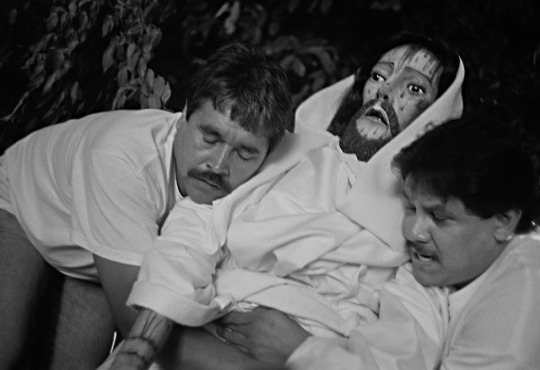
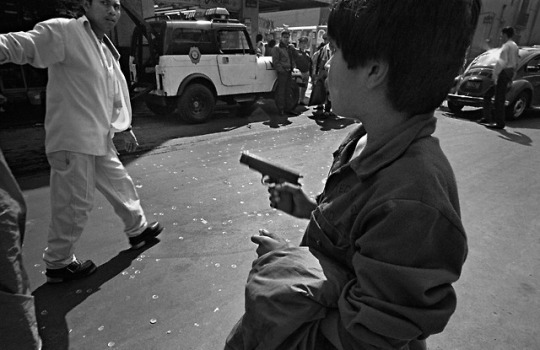
'Mexico Between Life and Death' — photographs by Harvey Stein
"I go as a wanderer, photographing in a country often strange to me. I hear words not known, see things I don't understand, view acts of kindness and violence, smell new odors and taste new foods; I walk down small, unfamiliar cobblestone streets. I react and photograph intuitively. When in Mexico, I am dizzy with new experiences and free to go anywhere and to do anything. The feeling is of endless possibilities. My limitations are my only restraint." — Harvey Stein
*****
Renowned American photographer Harvey Stein's fascination with Mexico began when he was a teenager. Compared to the mundane surroundings of his youth in Pittsburgh, Mexico seemed a mysterious and ambiguous place that was nearby, yet so far away. As a child, Stein was haunted by the notion of death and that someday he would no longer exist. He discovered by reading books about Mexico that the Mexican people viewed death as a natural part of life that should be celebrated. This made Mexico very comforting and special to him.
When he became a professional photographer, Stein knew that his photography was the perfect way to immerse himself in Mexico — to partake in ceremonies, meet the people, and express his interest and love of the country. During 14 trips between 1993 and 2010, Stein photographed in Mexico, primarily in small towns and villages, and mostly during festivals (Day of the Dead, Easter, Independence Day) that highlight the country's unique relationship to death, myth, ritual and religion.
"Mexico: Between Life and Death" shows fragments of what Mexico is — a country of incredible contrasts and contradictions. Mexico is about piercing light and deep shadow, of stillness and quick explosiveness, of massive tradition and creeping progress, of great religious belief but with corruption as a way of life. It is a land of ritual and legend, of vibrant life and dancing skeletons, and where old age is revered despite the fact that half of the population is under 20 years old.
Although Stein has always lived in the U.S., his emotional life and mind have been oriented toward Mexico for most of his life, and that relationship continues to this day. He says: "The images reflect my personal, passionate and intimate feelings about Mexico. So if the images are dark, intense, not all so lovely, so be it. It is only one person's vision. As Eugene Smith, probably the greatest photojournalist of the 20th century, once said of photographing Pittsburgh, 'It's only a rumor of the place.'"
Stein is a professional photographer, teacher, author and curator based in New York City. He teaches at the International Center of Photography and is the director of photography at the Umbrella Arts gallery in the East Village in Manhattan. He has been a member of the faculty of the School of Visual Arts, the New School and the Rochester Institute of Technology, among other institutions. He is a recipient of a Creative Arts Public Service (CAPS) fellowship and numerous artist-in-residency grants, and "Mexico: Between Life and Death" (Kehrer Verlag) is his eighth photo book. Others include: "Parallels: A Look at Twins," E.P. Dutton (1978); "Coney Island," W.W. Norton, Inc. (1998); "Coney Island: 40 Years, 1970-2010," Schiffer (2011); "Harlem Street Portraits," Schiffer (2013); and "Briefly Seen: New York Street Life," Schiffer (2015). Stein's photographs have been published in major periodicals worldwide, including the New Yorker, Time, Esquire, Smithsonian, the New York Times, Harper's Magazine, ARTnews, New York Magazine and Der Spiegel, to name a few, and in the major photo magazines, including Black & White magazine (cover), Shutterbug, Popular Photography, American Photo, PDN, Rangefinder Magazine, Photo Metro and fotoMAGAZIN (Germany).
Stein's photographs have been widely exhibited in the United States and Europe — 83 one-person and over 165 group shows to date. His photographs are in more than 57 permanent collections, including the George Eastman Museum, the Bibliothèque nationale de France, the Art Institute of Chicago, the Museum of Fine Arts, Houston, the Brooklyn Museum, the New Orleans Museum of Art, the International Center of Photography, the Carnegie Museum of Art (Pittsburgh), the Portland (Ore.) Art Museum, the Denver Art Museum, the Museum of the City of New York, Musée de la photographie à Charleroi (Belgium), the Corcoran Gallery of Art, the American Museum of Natural History, the Santa Barbara Museum of Art and the New-York Historical Society, among others. His work is in many corporate collections, including those of Johnson & Johnson, Hewlett-Packard, Barclays and Credit Suisse. He is represented by Sous Les Etoiles Gallery, New York City.
"Mexico: Between Life and Death," by Harvey Stein (Kehrer Verlag), book talk and signing Oct. 3, 2018, 6 p.m. to 8:00 p.m., here.
See more photos of 'Mexico Between Life and Death' by Harvey Stein and our other slideshows on Yahoo News.
Follow us on Twitter.
15 notes
·
View notes
Text
Check Out Some Weird and Fun Wookies in Real-Life Photography
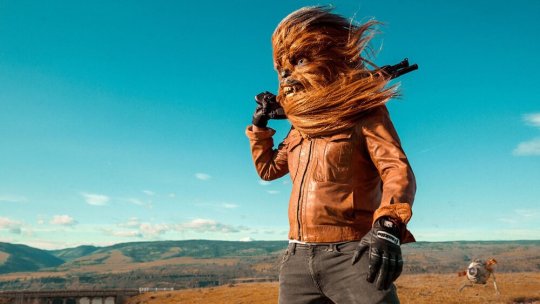
I’ve got a collection of weird, yet fun photos to share with you today from Oregon-based photographer, Mako Miyamoto. The photos feature Wookies in real life and they are certainly strange, especially the masks that have kind of a dopey look to them. These are just a few of the images. The photographer has a lot more on his site.
View this post on Instagram
Stop Blocking My Fists With Your Face III
A post shared by Mako Miyamoto (@neonwerewolf) on Mar 8, 2018 at 8:14am PST
View this post on Instagram
Stop Blocking My Fists With Your Face II :: #mondays
A post shared by Mako Miyamoto (@neonwerewolf) on Dec 18, 2017 at 8:12am PST
View this post on Instagram
Double Trouble Monday. @champagne.la & @dave_coy . . . . . . #meanstreets #wookie #hoodlums #chewbacca #gangsters #crossbow #biceps #bigfoot #hairymonster #scarymonster #hairy #gunshow
A post shared by Mako Miyamoto (@neonwerewolf) on Mar 5, 2018 at 7:56am PST
View this post on Instagram
Come on down to @stephaniechefasprojects tomorrow from 5-8pm to check out @ianmac138 doing the Malachi Crunch I as well as 8 other killer artists for the Summer Collective group show in PDX💪 . . . . . . #wookie #chewbacca #motocross #shred
A post shared by Mako Miyamoto (@neonwerewolf) on Jul 26, 2019 at 8:00am PDT
View this post on Instagram
The Malachi Crunch II :: outtake from the shoot for the Summer Collective show @stephaniechefasprojects opening this Saturday in #pdx . . . . . . #wookie #chewbacca #motocross
A post shared by Mako Miyamoto (@neonwerewolf) on Jul 25, 2019 at 12:46pm PDT
View this post on Instagram
Shine on you crazy diamonds. #maythe4thbewithyou . . . . . #starwars #chewbacca #wookie #chewy #hairy #sparks #smoke
A post shared by Mako Miyamoto (@neonwerewolf) on May 4, 2019 at 1:12pm PDT
View this post on Instagram
Rest In Peace Peter Mayhew, we salute you. You will be dearly missed. #petermayhew #chewbacca #wookie
A post shared by Mako Miyamoto (@neonwerewolf) on May 3, 2019 at 10:15pm PDT
View this post on Instagram
Aqua man I :: A piece from my upcoming show Speculative Hunting opening at the @gauntletgallery today in San Francisco! Come on down if you are in town, the fun starts at 730 pm! @svenman #wookie #chewbacca #ocean #starwars #sanfrancisco
A post shared by Mako Miyamoto (@neonwerewolf) on Apr 25, 2015 at 9:06am PDT
View this post on Instagram
Happy Hairy Turkey Day! #thanksgiving #turkey #wookie #chewbacca #starwars
A post shared by Mako Miyamoto (@neonwerewolf) on Nov 27, 2014 at 11:37am PST
View this post on Instagram
Can't believe it's been a year already, psyched I got to spend it with this one 🦄
A post shared by Mako Miyamoto (@neonwerewolf) on Jul 1, 2018 at 8:57am PDT
View this post on Instagram
Milk Teeth. 2018 // Come on down to @stephaniechefasprojects tomorrow in PDX to check out this piece as well as 18 other killer artists for the Special Blend 4 show, 7-10pm 6/1! . . . . . #wookie #chewbacca #chewy #bigfoot #datenight #date #diner #bigfoot #hairymonster #scarymonster #hairy #ketchup #hamburger #milkshake #lettermanjacket
A post shared by Mako Miyamoto (@neonwerewolf) on May 31, 2018 at 10:11am PDT
View this post on Instagram
Friday. 🕺🍸 . . . . . #bigfoot #chewbacca #chewy #wookie #neonparty #hairymonster #scarymonster #hairy #starwars #80sdanceparty #friday #tgif #boomboxes #djparty #vinyl #nowspinning #fridayfunday #pdx #portland #neonlights #neon #boombox #80s #dj
A post shared by Mako Miyamoto (@neonwerewolf) on May 11, 2018 at 8:08am PDT
View this post on Instagram
May the 4th be with you. #tgif
A post shared by Mako Miyamoto (@neonwerewolf) on May 4, 2018 at 7:28am PDT
View this post on Instagram
Portland! Come on down to the one day Pop-Up Art Shop curated by @stephaniechefasprojects , @nationale , and Grapefruit Art Space, open today only from 1-6 pm! You can see this lovely lady as well as a many other great pieces. 📍located at 211 SW 9th Ave in downtown PDX. See ya there! #wookie #laundryday #chewbacca #sundayfunday
A post shared by Mako Miyamoto (@neonwerewolf) on Dec 10, 2017 at 9:53am PST
View this post on Instagram
Going Up :: #mondayfunday #wookie #elevator #bat #trouble #chewbacca #bigfoot #chewy
A post shared by Mako Miyamoto (@neonwerewolf) on Nov 13, 2017 at 8:27am PST
View this post on Instagram
Born to Run :: @shotpuller #bruce #wookie #springsteen #motorcycle #wookie #bigfoot #biker #chewbacca
A post shared by Mako Miyamoto (@neonwerewolf) on Nov 27, 2017 at 7:41am PST
View this post on Instagram
The Clearing I :: from Further West, now on display @stephaniechefasprojects in PDX, come on down and check it out, through the end of the July! #wookie #astronaut #explorer #oregon #chewbacca #starwars #space #alien #sifi
A post shared by Mako Miyamoto (@neonwerewolf) on Jul 20, 2017 at 4:32pm PDT
View this post on Instagram
The Plateau I :: Check out this bad boy as well as 16 other pieces in my Further West Show on display @stephaniechefasprojects in PDX now through 7/29! #wookie #gorge #sifi #space #alien #chewbacca #starwars #shotgun
A post shared by Mako Miyamoto (@neonwerewolf) on Jul 16, 2017 at 6:15pm PDT
View this post on Instagram
The Power Plant II :: Come on down to @stephaniechefasprojects in PDX to check out the other pieces from Further West, my solo show opening this Friday, 7-10pm! #wookie #postapocalyptic #sifi #wasteland #chewbacca #starwars #ak47 #robot
A post shared by Mako Miyamoto (@neonwerewolf) on Jul 5, 2017 at 5:41pm PDT
View this post on Instagram
Tonight's the night! Come on down to @stephaniechefasprojects in PDX from 7-10 pm, grab a drink, and check out the rest of the pieces from Further West! #portland #artshow #wookie #astronaut #sifi #explorer #starwars
A post shared by Mako Miyamoto (@neonwerewolf) on Jul 7, 2017 at 11:01am PDT
View this post on Instagram
The Factory I :: Monday grind. A piece from my upcoming show @stephaniechefasprojects July 7th. #wookie #work #industrial #factory #chewbacca #commute
A post shared by Mako Miyamoto (@neonwerewolf) on Jun 26, 2017 at 2:16pm PDT
View this post on Instagram
The Farm I :: Psyched to share my first piece for my upcoming solo show Further West @stephaniechefasprojects in July! #wookie #windfarm #starwars #chewbacca
A post shared by Mako Miyamoto (@neonwerewolf) on Jun 15, 2017 at 5:53pm PDT
View this post on Instagram
Ocean air, salty hair. #hot #summer #ocean #fun #wookie #starwars #chewbacca #babe
A post shared by Mako Miyamoto (@neonwerewolf) on Jul 25, 2016 at 1:36pm PDT
View this post on Instagram
Summer. #wookie #summer #holiday #babe #chewbacca #starwars
A post shared by Mako Miyamoto (@neonwerewolf) on Jun 4, 2016 at 2:52pm PDT
View this post on Instagram
Happy Fourth, sweat it out! #maythe4thbewithyou @burncyclepdx #starwars #spinning #burncycle #wookie #chewbacca #sweat #workout
A post shared by Mako Miyamoto (@neonwerewolf) on May 4, 2016 at 9:23am PDT
View this post on Instagram
Satoyama 2016 :: Come on down to @stephaniechefasprojects show Straight Outta Portland this Friday in SE PDX to see this bad boy as well as a ton of killer art by other local artists! #portland #wookie #lumberjack #chewbacca #plaid #badass #chainsaw #forest #lumbersexual #tough #starwars
A post shared by Mako Miyamoto (@neonwerewolf) on Feb 3, 2016 at 10:20am PST
View this post on Instagram
Safety Sunday. #hairy #ocean #cruise #chewbacca #wookie #starwars #sea
A post shared by Mako Miyamoto (@neonwerewolf) on Dec 13, 2015 at 11:29am PST
View this post on Instagram
Happy Birthday America! #hairy #4thofjuly #wookie #chewbacca #usa
A post shared by Mako Miyamoto (@neonwerewolf) on Jul 4, 2015 at 1:49pm PDT
View this post on Instagram
Skate or Die II :: A shot from Speculative Hunting up at the @gauntletgallery ! Grab a limited edition print and check out the show in #sanfrancisco , it will be if for the next few days! #rollerskate #wookie #chewbacca #babe #starwars #skating
A post shared by Mako Miyamoto (@neonwerewolf) on May 12, 2015 at 4:54pm PDT
View this post on Instagram
Hit Me With You Best Shot :: From my show Speculative Hunting up at the @gauntletgallery in #sanfrancisco, limited edition prints available, get em while they're hot! #wookie #tennis #babe #starwars #chewbacca
A post shared by Mako Miyamoto (@neonwerewolf) on May 13, 2015 at 1:08pm PDT
View this post on Instagram
Tears in Rain I :: a shot from my show Speculative Hunting @gauntletgallery , check it out if you are in #sanfrancisco ! @svenman #wookie #neon #bladerunner #starwars #chewbacca
A post shared by Mako Miyamoto (@neonwerewolf) on May 3, 2015 at 10:47am PDT
source https://geektyrant.com/news/check-out-some-weird-and-fun-wookies-in-real-life-photography
0 notes
Text
February 14 in Music History
1602 Birth of Italian opera composer Pietro Francesco Cavalli in Crema.
1656 FP of Jean-Baptiste Lully’s ballet Alcidiane in Paris.
1758 Birth of baritone Francois Lays.
1778 Birth of Catalan guitarist and composer Fernando Sor.
1783 Death of soprano Marie-Josephine Laguerre.
1790 Death of English composer and organist Capel Bond in Binley.
1813 Birth of Russian composer Alexander Dargomyzhsky in Tula province.
1816 Birth of mezzo-soprano Anna Vorobyeva-Petrova.
1829 FP of Vencenzo Bellini's opera La Straniera, in Milan.
1832 Birth of French composer Paul Agricole Genin in Avignon.
1838 Birth of American band composer David Wallis Reeves.
1857 Death of Dutch composer Johannes Bernardus van Bree in Amsterdam.
1865 FP in USAmerica of J.S. Bach's Keyboard Concerto No. 7 in G minor, with pianist Benjamin J. Lang and members of the Mendelssohn Quintet Club at Chickering Hall in Boston, MA.
1880 Birth of soprano Maria Labia.
1880 FP of G. Fauré's Piano Quartet No. 1 in c, Op. 15, at a concert of the Société Nationale de la Musqique Français in Paris.
1891 Birth of tenor Parry Jones.
1902 Birth of bass-baritone Jean Vieuille.
1912 Birth of soprano Milada Musilova.
1912 Birth of tenor Horst Taubmann.
1920 FP of Erik Satie's Socrate in Paris.
1922 FP of Zandonai's opera Giulietta e Romeo 'Romeo and Juliet', in Rome.
1929 Birth of English conductor Wyn Morris.
1929 Birth of tenor Karl-Josef Hering.
1930 Birth of tenor Kazimierz Pustalak.
1932 FP of Berthold Goldschmidt's opera Der gewaltige Hahnrei, at the National Theater in Mannheim.
1934 Birth of Swiss choral conductor Michel Corboz.
1937 Birth of tenor Jean Bonhomme.
1938 Birth of American composer Charles Fussell.
1940 FP of John Cage's Second Construction for percussion, in Portland, OR.
1947 Death of soprano Celestina Boninsegna.
1952 Birth of American composer Edward Pond.
1953 FP in USAmerica of Stravinsky's opera The Rake's Progress at the MET.
1953 Birth of American electronic music composer Wayne Siegel.
1955 Death of soprano Lucette Korsoff.
1956 Birth of American composer Steven Mackey.
1959 Birth of American soprano Renee Fleming in Rochester New York.
1961 Birth of American composer Craig Bakalian.
1965 Death of French conductor and composer Desire-Emile Inghelbrecht.
1972 Death of Dutch composer Bertus van Lier in Roden.
1986 Death of English composer and pianist Charles Rubbra.
2002 Death of German conductor Gunter Wand.
2003 FP of Robert Maggio's ballet Le Travail at Pennsylvania Ballet with choreography by Matthew Neenan in Philadelphia. The ballet was designed to coincide with Dégas and the Dance exhibit at the Philadelphia Art Museum.
0 notes
Text
Jake Manning "Guests of Space"
| Guests of Space
NATIONALE
Co-curator Paul Maziar
March 16, 2018, through April 19, 2018
Artist reception: Sunday, March 18, 2018, from 3—5 PM
NATIONALE hours: Thursday—Tuesday from 12—6 PM, closed Wednesdays
EXHIBITION INFORMATION
Nationale and co-curator Paul Maziar present Guests of Space, Jake Manning’s first solo exhibition with the gallery. This body of work is made up of variously-sized, pastel- and night-hued paintings that bear resemblances to the artist’s imagination, memories, and liminal moments that seem to conflate the two. The paintings abound with stories, however fragmented, in settings which often resemble a dream—full of strangeness, irony, gloom, hilarity.
Because Manning began his creative practice making films—seeing, thinking, working primarily in images—there's a feeling that, as he paints, he is seeing the world through new eyes. Guests of Spaceis a way into this world, one that privileges creative imagination over what most refer to as the ordinary everyday. For Manning, painting allows for a personal, deeply inner experience to be translated outwardly in delightful and relatable ways. He achieves this with recurring figures, simple, semi-familiar, and humorous subjects beset by uncertainty, a sense of doom and loss that mirror our daily experience. These paintings are a reminder that—unlike the past and the future—it is in fact imagination, story, and play that one can rely on.
ARTIST INFORMATION
Jake Manning was born in Texas, and lives and works in Portland, OR, where he recently graduated from Portland State University. In the fall of 2017, Manning received The Arlene Schnitzer Visual Arts Prize (Third Place), an award from the Harold & Arlene Schnitzer CARE Foundation recognizing excellence in visual art. His work has been shown at the Portland International Film Festival and at Autzen Gallery (PSU). Manning has been accepted to the MFA program at Alfred University.
0 notes
Text
Art In The Cafe: A Conversation With May Barruel Of Stumptown Coffee
I believe in the power of cafe walls.
Growing up in Tacoma, Washington, my first exposure to visual art and coffee went hand in hand, at long-departed coffee bars like The Usual and Temple of the Bean, whose interior doubled as a rotating gallery space for local artists. There’s something so obvious and intuitive about it, the non-discursive linearity of sipping a mug of something warm and looking at a canvas of something cool. It felt so natural to teenage me: “I’m at a cafe, the coolest place I can possibly imagine, and there is art, of course, because that is also cool.”
20 years (give or take) and a great many cafe hours later, I feel exactly the same way. Coffee bars can remain as glorious repositories of art and culture; I would argue that, in fact, that coffee bars should exhibit art, if they are so able, as a kind of public expression of the greater good, supporting emerging artists along the way. You might not be a professional art critic, or an art collector, but you can go to a cafe that features rotating artists, and that means something.
Here in Portland, where Sprudge is published, we’ve long cherished the ever-changing collections exhibited at places like The Red E Cafe (1006 N Killingsworth St) and The Red Fox (5128 N Albina Ave), and at May Barruel’s extraordinary Nationale (3360 SE Division St), an art gallery, book and magazine shop in the heart of busy SE Division Street. Nationale carries my favorite magazine, and is kaleidoscopic in the range of artists and voices it exhibits, from sculpture to oil painting to photography. Openings and talks are always free to attend, and those looking to purchase work can do so on a payment plan. Nationale’s manifesto on the meaning of art collection is a must-read, and in it, Barruel writes:
…[it is] important to consider the broader positive effects of collecting art. When you purchase a painting, sculpture, photograph, and so forth, you are supporting ideas and creativity, not just of the individual maker but of a larger circle. Every purchase ricochets, especially in a small community such as Portland, and affects more than just the one artist—it creates a culture of collecting in which art and ideas are valued in a very tangible way.
In late 2017, Stumptown Coffee Roasters hired on May Barruel to curate its newly launched Stumptown Artist Fellowship program, continuing her long-running work with the company (she started there as a barista in 2005). Artists selected for the program receive a $2,000 grant from Stumptown, and have their works exhibited at the newly remodeled Stumptown coffee bar in downtown Portland (128 SW 3rd Ave). The first exhibition launched in December, featuring the works of Wendy Red Star, a Portland-based multimedia artist whose work confronts and subverts popular conceptions of Native American cultural representation. It’s a stunning exhibit, and sets a new standard for the cafe as public art space—photos of the exhibit appear throughout this feature.
Wendy Red Star’s show closes this week, making way for the work of artist Jennifer Brommer, a Portland and Brooklyn based portrait and fashion photographer whose photo installation Memphis explores race and class in the American south. In advance of this launch, and with commentary on the last days of the exhibition from Wendy Red Star, I spoke with May Barruel about her role curating the Artist Fellowship at Stumptown, art’s place in the cafe, and why Wendy Red Star’s work feels so vital right now.
This interview has been edited and condensed for clarity.
Hello May Barruel, and thank you for speaking with me. Give our readers a little bit of background on how you came to have your current role with Stumptown.
I started working for Stumptown in the spring of 2005, first as a barista and then as the manager for the Annex.
In 2007, when the art curator position became available I applied for it and was offered the Downtown cafe. I’ve been curating that space ever since.
What do you see as art’s role in the cafe?
It’s interesting to be asked this question right after the recent remodel. When we re-opened in early December, we were waiting for everything to be dried and painted before installing Wendy Red Star’s show, and so the walls were bare for almost a week. Walking in the cafe felt very cold, almost as if there were no life to the space. The baristas were all telling me, “I can’t wait for the art to go up!” And once it did, it was a complete transformation. So with that in mind, I’d say a huge role of art in the cafe is for the space to come alive, to have a soul in a way.
Another important role is that the monthly exhibitions in three of our Portland cafes have, in a way, been supporting artists ever since our beginnings in 1999 by providing them a space to show their work in a professional manner, reach new audiences, and hopefully make some sales to pay for that ever more expensive art studio.
Finally, I’m always thinking about our customers and staff, and hope the art I choose can add something special or unexpected to their day, whether it’s visual or something more existential.
Growing up I can think of a few specific cafes in the Seattle and Tacoma area (where I’m from) that featured rotated art shows. These spaces left an impression on me, and I’m curious if you have similar cafes from yesteryear whose approach to art inspired you?
I grew up in France where, as far as I can remember, cafes don’t really show art being made at that moment. After moving to Portland in 2000, I first started noticing art outside of traditional galleries at places like the Albina Press (curated at the time by Gretchen Vaudt), Valentine’s (curated at the time by Jen Olesen), and Stumptown (curated at the time by Daniel Gonzalez). I also remember big art parties like the Alphabet Dress and the Modern Zoo, which were thrown by artist-run DIY collectives. These very much informed my wanting to be involved in the visual arts scene.
How did you come to work with the artist Wendy Red Star?
When I first met our CEO, Sean Sullivan, we talked about his vision for the Downtown cafe, how art was going to have a greater place in it with the remodeling, and he told me to “aim high.” He asked specifically, “If you could show anyone in Portland, who would it be?” Wendy was one of the first artists who came to mind. I had seen her work last year at the Portland Art Museum and it had a strong impact on me. I reached out to her and she accepted to be the first artist to show at the cafe after the remodel. We did not tell her about the Stumptown Artist Fellowship until we announced the program in early December and her as the first recipient. I love the fact that after showing in numerous museums and larger institutions, she was excited to show in a coffee shop. When I talked to her about that, she mentioned having always wanted to show in a coffee shop and being somewhat disappointed when she was in college that her friends would get shows and she didn’t. So she said she saw the exhibition as her homecoming and loved the idea of being able to show to a large audience here in Portland where she lives.
Why do you think work like Wendy Red Star’s is so vital to exhibit in a public space?
First of all, I love that people who either can’t afford to visit museums or don’t have the habit, will get to see her work. There is something very democratic about that.
I think it’s important as well to show work which is not just purely visual or “pretty,” but which also asks the audience to take a moment out of their busy lives to reflect on the past and on the world we live in. The series Wendy is presenting is very subtle but also extremely powerful. We have to look at ourselves while looking at these life size portraits of Crow women. Our environment/world is reflected in the work, you might catch someone in the “background” taking a selfie with their latte art, it is such a shocking and somewhat absurd contrast from the world these women inhabited. I’m also thinking about Wendy’s statement. How she wrote, “Since leaving my reservation at age 18 to attend college I have often felt alone,” and so the idea of these Crow children and women being there is important in that they would make her, and others like her, feel less alone when they visit the space.
Thank you.
Wendy Red Star’s exhibition at Stumptown’s Downtown Portland closes Wednesday, January 31st. A reception for incoming artist Jennifer Brommer will be held on Wednesday, February 7th from 5-7pm. Attendance is free and open to the public.
Jordan Michelman is a co-founder and editor at Sprudge Media Network. Read more Jordan Michelman on Sprudge.
Disclosure: Stumptown Coffee Roasters is an advertising partner on Sprudge Media Network.
The post Art In The Cafe: A Conversation With May Barruel Of Stumptown Coffee appeared first on Sprudge.
seen 1st on http://sprudge.com
0 notes
Link
Artists: Aimar Arriola, Nicole Bachmann, Omer Fast, Pedro G. Romero, Paul Maheke, Amalia Pica
Venue: Tenderpixel, London
Exhibition Title: A Gesture Towards Transformation
Note: Aimar Arriola’s Keratin Manifesto associated with the exhibition is available for download here.
Date: October 4 – November 25, 2017
Click here to view slideshow
Pedro G. Romero, excerpt of La Casa, 2005, video
Full gallery of images, video, press release and link available after the jump.
Images:
Video:
Omer Fast, excerpt of CNN Concatenated, 2002, video
Images and videos courtesy of Tenderpixel, London. Photos by Orestis Lambrou.
Press Release:
As verbal communication is becoming less and less trustworthy – and one could say, purposely and progressively emptied out of meaning through politics and mass media – we search for meanings that lie elsewhere. How can we free ourselves from set definitions enforced by spoken language’s power structures? Beyond words, we find plenty of other forms of communication, such as sound, tone, gesture, movement, rhythm, resonance and the repetition of all of the above. They are essential to how we go through the world, arranging the space between ourselves and our others – our boundaries become relational, they touch and intersect.
Such ways of sensing and describing our circumstances become essential parts of our identities. This is how we relate to our surroundings, how we define ourselves in the eyes of others as well as to ourselves, thinking about the permeability of borders such as our skin. With A Gesture Towards Transformation, the gallery spaces become a territory encoding a multiplicity of identities and geographies, constantly shifting and moving.
Expanding the idea of the present, the works were conceived and enacted at various historical moments over the last two decades, and yet remain viscerally relevant to our current times. Carrying the potential for transformation and activism, rather than being directly reactionary to contemporary politics, they build a new language and meaning bottom up, and through their own logic. Rather than creating utopian or parallel circumstances, the works exist in this reality and articulate empowering statements.
Aimar Arriola (b 1976 Markina-Xemein, Basque Country, Spain) works as an independent researcher, curator and editor based in London and Basque Country. He is a graduate from PEI Independent Studies Program at Museum of Contemporary Art (MACBA), Barcelona, and Curatorlab – Curatorial Postgraduate Program at Konstfack University, Stockholm.
At present, he is a Visual Cultures PhD Candidate at Goldsmiths, University of London, UK as well as Chief editor of The Against Nature Journal, a new inquiry on the ‘against nature’ concept in law initiated by Council, Paris, FR. Together with Nancy Garín and Linda Valdes, he develops AIDS Anarchive, a long term project on the cultural responses to HIV/AIDS in southern Europe and Latin America, with a focus on Spain and Chile.
In 2016-2017 he has developed exhibitions and public program initiatives in contexts such as The Showroom, London, UK; CentroCentro, Madrid, SP; Tabakalera, San Sebastián, SP; Museum of Fine Arts, Bilbao, SP, among others. He has been a researcher-in-residence at X Central American Biennial, Costa Rica (2016); Visual AIDS, New York, US (2014); and Reina Sofía Museum, Madrid, SP (2012-2013).
As a writer, he has contributed to Afterall Journal, Caderno Videobrasil, We Who Feel Differently (an editorial project by artist Carlos Motta), and L’Internationale Online. He runs Album, his own on-and-off publishing house and is the editor of various artist books and web projects.
Nicole Bachmann (b 1978, Zurich Switzerland) is based in London and Zurich.
After graduating from Zurich University of the Arts, she completed an MFA at Goldsmiths, University of London, in 2010. In her practice Nicole Bachmann explores ways of knowledge production through the use of the voice, language, movement and rhythm, and how can they be activated by the individual to make oneself heard and used as an agent for social and political change.
A selection of solo and group exhibitions includes Block Universe, Performance Art Festival, London, UK; London meets Altdorf, Haus für Kunst, Uri, Switzerland; Helmhaus Museum, Zurich, Switzerland; Solo Show, Corner College, Zurich, CH (all 2017); Historical Exhibition: Sites under construction, co-curated by Francesca Gavin, Manifesta 11, Zurich, CH; Performance, Haus der Zünfte, Cabaret Voltaire, Zurich, CH; L*, a project by Marie-Michelle Deschamps, Darling Foundation, Montreal, CA; Take One/Take Two/Take Three, Eastside Projects, Birmingham, UK (all 2016); DOings & kNOTs / Tegevus-sõlmed, Tallinn Art Hall, Estonia Rhythm of Thought, Whitechapel Gallery, London, UK; Look Live, Performance, ICA, London, UK; Control / Shift / Plus, Museum Bärengasse, Zurich, CH; Werkstipendien, Helmhaus, Zurich, CH (all 2015); Objective Considerations, MOT International Project Space, London, UK; Say it in words, Coleman Project Space, London, UK; Performance as Publishing presents: The flow between the thing and the word, Modern Art Oxford, UK; Performance as Publishing, New York Art Book Fair, with Classroom curated by David Senior, PS1, NY, US; Swiss Art Awards, Basel, CH Aus dem OFF, curated by Patricia Bianchi, Winterthur, CH (all 2014); Disappearing Into One, Zabludowicz Collection, London, UK (2013); Performance as Publishing, Kunsthalle Basel, CH (2012); Ha, around the corner of one eye, Perla Mode, Zurich, CH (solo presentation) (2011).
Her recent awards include Werkbeitrag, the Swiss Arts Council Pro Helvetia; Winner Werkstipendium (Art Prize) City of Zurich, CH; and Art Prize 2008, Nationale Suisse, Basel, CH; she has been awarded a number of residencies including Residency at LUX, London and Residency at Edinburgh Sculpture Workshop both with Ruth Beale and the Escalator program atWysing Arts Centre, Cambridgeshire, UK. And several project grants by various foundations and Arts Council England and Swiss Arts Council.
Omer Fast (b 1972, Jerusalem Israel) lives and works in Berlin. He has received an MFA from Hunter College in New York City and completed his BFA from Tufts University/School of the Museum of Fine Arts (1995). He is a contemporary video artist and filmmaker, employing multichannel techniques, repetition and re-staging narratives at the frontier of documentary and fantasy.
He is the recipient of Preis der Nationalgalerie für junge Kunst, Berlin and 2008 Bucksbaum Award from the Whitney Museum of American Art and the Louis Comfort Tiffany Foundation Prize (2003).
Solo shows include Talking is not always the solution, Martin-Gropius Bau, Berlin, DE(2017); Continuous Present, Baltic Center of Contemporary Arts, Gateshead; Omer Fast, James Cohan, New York, US; Omer Fast, Kunsten Museum of Modern Art, Aalborg, DK(all 2016); Omer Fast, Le présent continu, Jeu de Paume, Paris, FR; Omer Fast, Taro Nasu Gallery, Tokyo; MOCAK Muzeum Sztuki Wspolczesnej w krakowie, Krakow, PL(all 2015); 5000 Feet is the Best, Stedelijk Museum, Amsterdam, NL(2014).
Selected group shows include Please come back. The world as prison?, MAXXI, Rome; Modern and Contemporary Art Portland Museum, Portland, UD; Looking for the Clouds,Casino Luxembourg Forum d’art contemporain, Luxembourg, LX; Under Arms, Fire & Forget 2, Museum Angewandte Kunst, Frankfurt, DE (all 2017); Fire and Forget, Museum für Angewandte Kunst, Frankfurt, DE; Whistleblowers and Vigilantes; Figures of Digital Resistance, Hartware Medien Kunst Verein, Dortmund, DE; Art from Elsewhere, Towner, Eastbourne; Thomas Demand: L’image volée, Fondazione Prada, Milano, IT; Se souvenir des belles choses, Musée Régional d’Art Contemporain Languedoc-Roussillon Midi-Pyrénées, Sérignan, FR (all 2016); 1st Asia Biennial / 5th Guangzhou Triennial, Guangdong Museum of Art, Guangzhou; Fomo, Friche de la belle de Mai, Marseille; Art from Elsewhere, Birmingham Museum & Art Gallery, Birmingham, UK (all 2015); Invisible Hand: Curating as Gesture, CAFAM Biennale, Central Academy of Fine Arts Museum, Beijing CH (2014).
His work has been acquired and included in permanent collections of Whitney Museum of American Art, Solomon R. Guggenheim Museum and the Metropolitan Museum of American Art in New York, US; The Los Angeles County Museum of Art; Tate Modern, London; Centre Georges Pompidou, Paris, FR; and the Stedelijk Museum, Amsterdam, NL. He is the recipient of Preis der Nationalgalerie für junge Kunst, Berlin, DE (2009), Bucksbaum Award from the Whitney Museum of American Art (2008) and the Louis Comfort Tiffany Foundation Prize (2003).
Pedro G. Romero (b 1964 Aracena, Huelva, Spain) lives and works in Seville, where he graduated in Fine Arts. His body of work unfolds through multiple disciplines: he worked as a curator, sculptor, painter, flamenco expert, performer, theatrical author, screenwriter, critic of art and literature, editor and essayist.
He is the recipient of a selection of important awards such as the Spanish National Radio prize ‘El Ojo Crítico’ and a scholarship from the Cartier Foundation in Paris. He is the author of two publications on his own work, Las correspondencias and Los países, in a co-edition between Casa sin fin and Periférica. His project Archivo FX (an open archive, created at the end of the 90s, that establishes relations between different readings of documentary sources, used as a dictionary which also functions as an artistic index), has been exhibited in institutions such as the Tàpies Foundation (Barcelona), the Reina Sofía Museum (Madrid), the Venice Biennale, Manifesta, the Serralves Foundation (Porto), the MUSAC (Leon), MACBA (Barcelona), Montehermoso Cultural Center (Vitoria), CAPC (Bordeaux), MUDAM (Luxembourg), the Sculpture Center (New York), the Picasso Museum (Barcelona) or the Kunstverein in Stuttgart, among others.
Selected solo and group shows include dOCUMENTA 14, Kassel, DE; Máquinas de Trovar, àngels Barcelona, ES; Don Dinero Dos (Mister Money Two), Galería Casa Sin Fin, Madrid, ES (all 2017); Atlas. How to Carry the World on One´s Back?, Museo Nacional Centro de Arte Reina Sofía, Madrid, ES; ZKM, Karlsruhe; Deichtorhallen, Hamburg, DE; (all 2011-2012); Manifesta 8, Cartagena, Murcia, ES; Monument to Transformation, Montehermoso, Vitoria-Gasteiz, ES; (2010); Insiders. Practices, Customs, Know-How, Musée d´art contemporain, Bordeaux, FR; Out of Storage II: Rythmes, Musée d´Art Moderne Grand-Duc Jean, Luxemburg, LU; (2009); Soy el final de la reproducción, SculptureCenter, Long Island, US (2008); Silo. Archivo F.X., Museo Nacional Centro de Arte Reina Sofía, Madrid, ES;The Unavowable Community, Catalan Pavilion, 53rd Venice Biennial, Venice, IT (all 2009); Soy el final de la reproducción, Castillo/Corrales, Paris, FR; MACBA im Frankfurter Kunstverein, Kunstverein Frankfurt, DE; 1st Thessaloniki Biennial of Contemporary Art, Thessaloniki, GR (all 2007); Archivo F.X. La ciudad vacia, Fundació Antoni Tàpies, Barcelona, ES (2006).
His work as curator includes Brossa Poetry, MACBA, Barcelona, Es (2017); The Spanish Night. Flamenco, Avant-Garde and Popular Culture, Museo Nacional Centro de Arte Reina Sofía, Madrid, ES (2007-2008) and A Theatre Without Theatre, MACBA Barcelona, ES (2007).
Paul Maheke (b 1985, Brive-la-Gaillarde France) lives and works in London. He completed an MA Art Practice from École nationale supérieure d’arts de Cergy (2011) and was an Associates of study at Open School East’s Programme of study, London, UK (2015), with a focus on research and public engagement around identity politics and new subjectivities, dance and the body as political and affective archive.
Selected solo and group exhibitions from recent years include Acqua Alta, Galerie Sultana, Paris, FR; What Flows Through and Across, Assembly Point, London, UK; In Me Everything is Already Flowing, cur. Room E-1027, Center, Berlin, DE; Ten Days Six Nights, cur. Catherine Wood and Andrea Lissoni, Tate Modern, UK; Diaspora Pavilion, cur. David A. Bailey, during 57th Venice Biennale, IT; (X) A Fantasy, David Roberts Art Foundation, London, UK; Partitions Performances, cur. Christian Alandete, Fondation Ricard, Paris, FR; Klub Fiesta, cur. Michal Novotný + Lumír Nykl, Plato, Ostrava, CZ; The problem with having a body / is that it always needs to be somewhere, The Approach, London, UK; Posthuman Complicities, cur. Andrea Popelka and Lisa Stuckey, Akademie der Künste, Vienna, AT; Opaque Poetics, Music Festival cur. Nkisi, Wysing Arts Centre, Cambridge, UK; La Pensée du Tremblement, cur. Diamètre, YGREC, Paris, FR; Habits of Care, cur. Helena Reckitt, Blackwood Gallery, Toronto, CA (all 2017); I Lost Track of the Swarm, South London Gallery, London, UK; Green Ray Turns Out To Be Mauve, Green Ray, London, UK (all 2016); Re-former le monde visible, Le 116, cur. Marlène Rigler, Montreuil, France; Festival of minimal actions, cur. Thomas Geiger, Bruxelles, Belgique; Paysage Sauvage / Wilderness, Les Banquets du Château, cur. Marianne Lanavère, Centre International d’Art et du Paysage – Île de Vassivière, France (all 2014); 59th Salon de Montrouge, France; VIVA!, Centre CLARK, Montreal, Quebec; Si nous continuons à nous parler le même langage, nous allons reproduire la même histoire, Le Commissariat, Treize, cur. Mikaela Assolent + Flora Katz, Paris, France; Videoakt, French Institute, Barcelona, Spain; Supermarket 2013, LMDP crew, Kulturhuset, Stockholm, Sweden (all 2013); «Pratiques Furtives» : fragments d’une enquête, cur. Patrice Loubier, Skol art center, Montreal, Quebec (2012); Le musée performatif, Patio del Liceo, cur. Liv Schulman, Bueños Aires, Argentina (2011).
Paul Maheke was awarded the South London Gallery Graduate Residency, UK, 2015 – 2016; Moving UP, commissioned by The Serpentine Galleries, London, UK, 2015; Darling Foundry, Montreal, 2015; Centre International d’Art et du Paysage, Vassivière, France, 2014; Résidence de la Ville de Montrouge, France, 2014; Villa Pan, Hors les Murs programme, French Institute, Suzhou, China, 2010.
Amalia Pica (b 1978, Neuquén, Argentina). She is currently living and working in London and is the 2011 recipient of a grant from the Cisneros Fontanals Art Foundation, Miami. Completing her education at Rijksakademie van Beeldende Kunsten, Amsterdam, NE and Instituto Universitario Nacional del Arte, Buenos Aires, AR, her work has its interest in social circumstances and their effect on how language is used to communicate, along with the potentiality of language. She makes us of comical and historical narratives to explore social situations, communal spaces and freedom of speech.
Selected solo and group shows include The Power Plant, Toronto, CA Institute of Modern Art, Brisbane, AU; A un brazo de distancia, NC Arte, Bogotá, CO; Instituto de Vision, Bogotá, CO (both 2017); Double Edge, Folkestone Triennial, Folkestone, UK; This Is Not a Selfie: Photographic Self-Portraits from the Audrey and Sydney Irmas Collection, San Jose Museum of
Art, San Jose, US; EXIT, curated by Adam Carr, Rodolphe Janssen, Brussels, BE; The Shyness of the Crowns, Museum of Contemporary Art, Vigo, ES; FRAC Lorraine, Metz, FR; Nieuw Amsterdams Peil: Where do we go from here?, Amsterdam, NL; Gray Matters, Wexner Center for the Arts, Columbus, US; Asamble (performance), Solomon R. Guggenheim Museum, New York, US; Drawing Biennial 2017, The Drawing Room, London, UK; EAT SLEEP WORK REPEAT, Travelling Gallery, Scotland (various locations), UK; The String Traveller, S.M.A.K, Ghent, BE; CONDO, Herald St, London, UK (all 2017); Blow the Whistle, Beat the Drum, Mark Foxx, Los Angeles, US; Gwangju Biennale, Gwangju, KR; Manifesta 11, Zurich, CH (all 2016); PORTLLIGAT, El Nuevo Museo de Arte Contemporáneo, Guatemala City, GT; Galerie Johann König, Berlin, DE (all 2015); La Criée Centre d’art Contemporain, Rennes, FR; A ∩ B ∩ C (line), Van Abbemuseum, Eindhoven, NL; Switchboard, Mostyn, Llandudno, UK; One Thing After Another, Stigter van Doesburg, Amsterdam, NL (all 2014); Amalia Pica en el MNBA, Museo Nacional De Bellas Artes, Neuquen, AR; Se essas paredes falassem, Phosphorus, São Paulo, Brazil, BR; A ∩ B ∩ C (line), Herald St, London, UK; Memorial for Intersections, Kunsthalle Lissabon, Lisbon, PT; Low Visibility, Galerie Johann Konig, Berlin, DE; A ∩ B ∩ C, Museo Tamayo, Mexico City, MX (all 2013); Amalia Pica, Chisenhale Gallery, London, UK (2012); I am Tower of Hamlets as I am in Tower of Hamlets, just like a lot of people, Off-site project, Chisenhale Gallery, London, UK ( all 2011).
Link: “A Gesture Towards Transformation” at Tenderpixel
Contemporary Art Daily is produced by Contemporary Art Group, a not-for-profit organization. We rely on our audience to help fund the publication of exhibitions that show up in this RSS feed. Please consider supporting us by making a donation today.
from Contemporary Art Daily http://ift.tt/2iGxoMg
0 notes
Photo
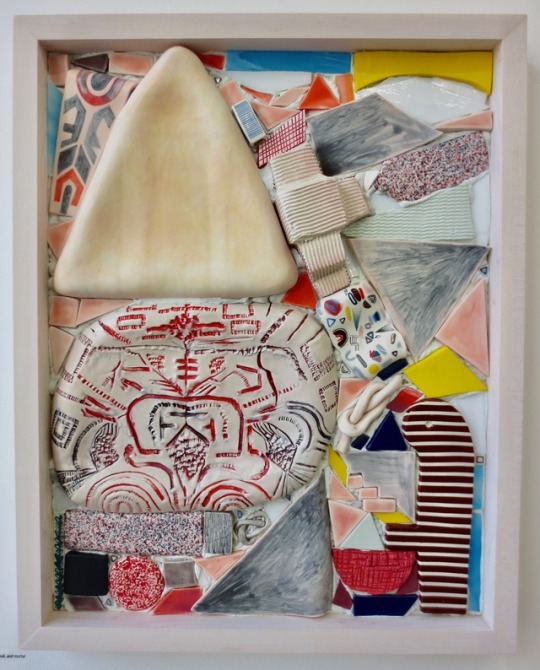

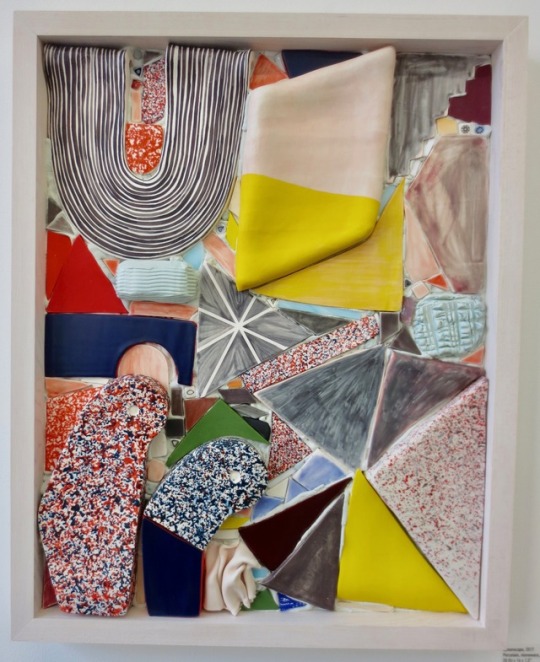
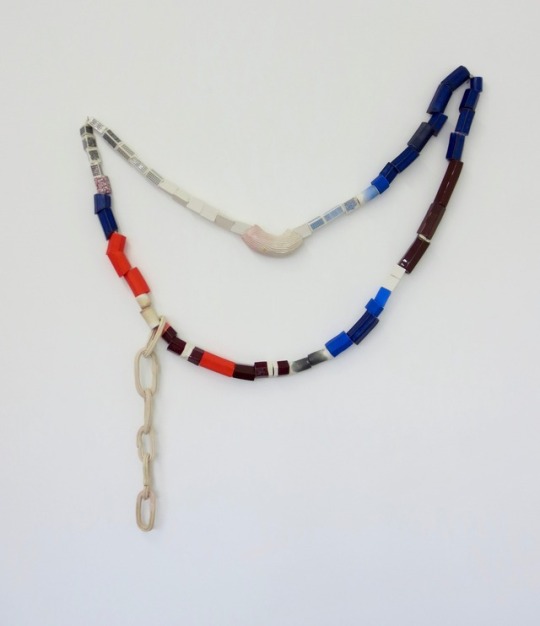
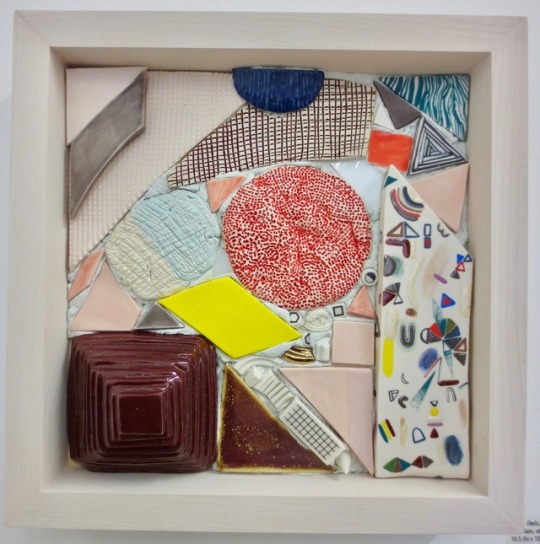
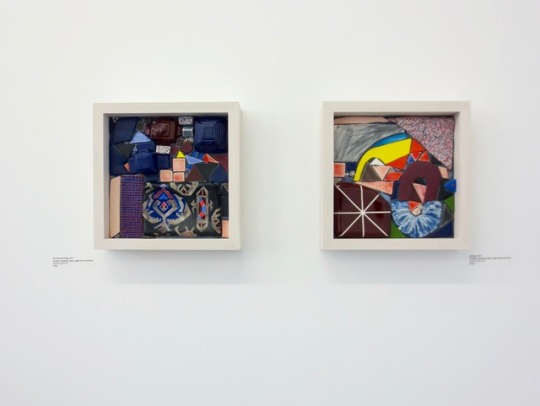
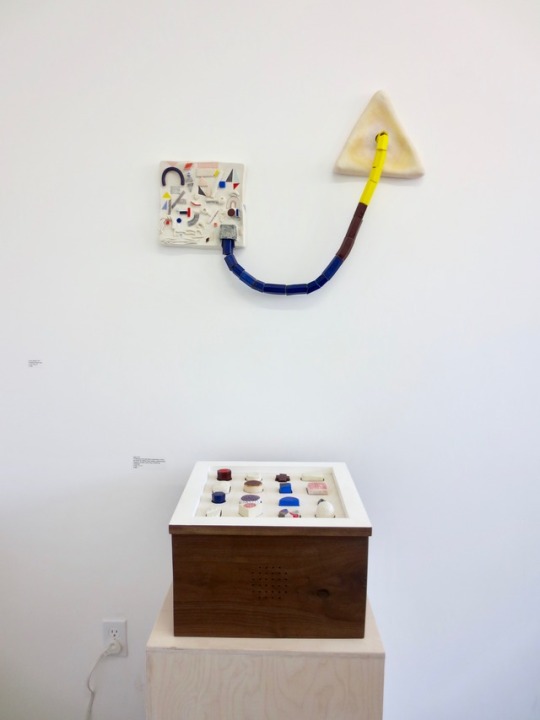
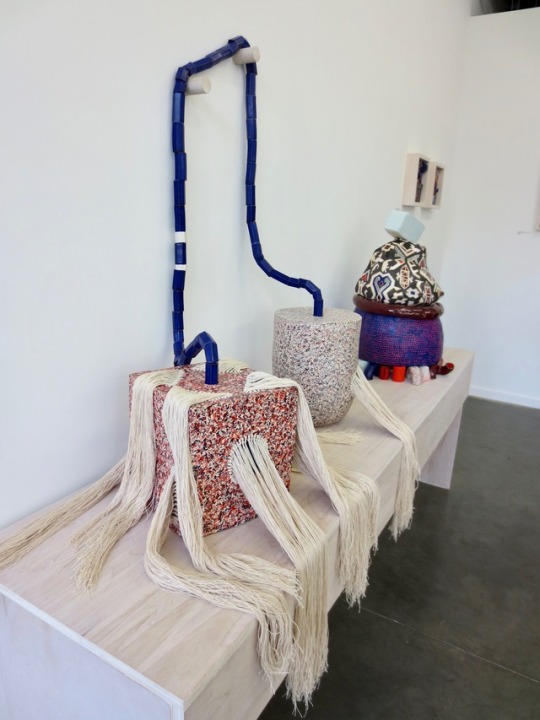
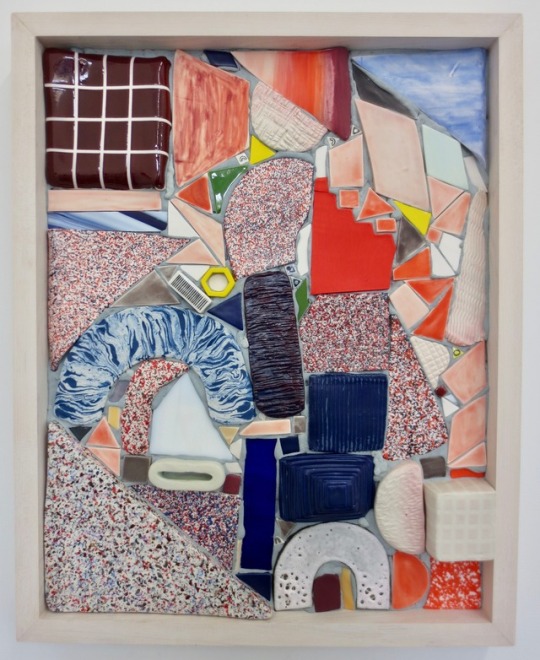
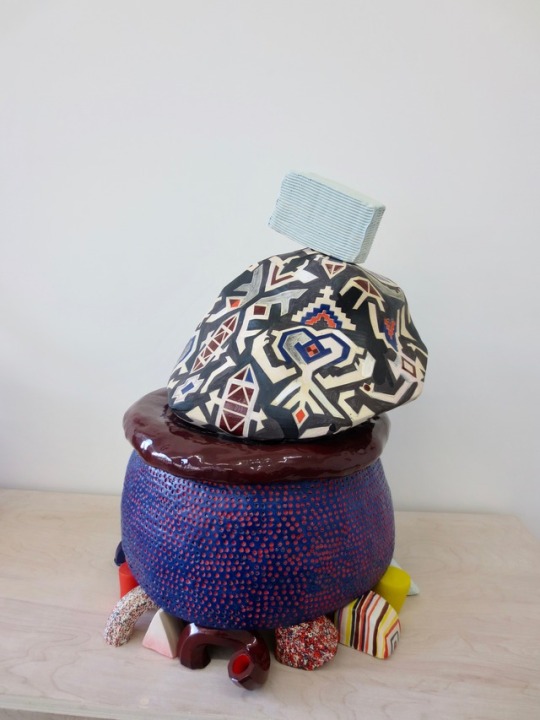
Emily Counts: form factor at Nationale
nationale.us
5 notes
·
View notes
Text
Everything We Ever Wanted @ Nationale
Sam Hopple
Portland is so hot right now. No really, from the 90 degree weather in the forecast lately it is clear that summer is officially here in PDX. If you find yourself waiting in line for an hour to get your hands on an ice cream cone from the Division Street Salt and Straw, consider this: Right across the street is an air-conditioned gallery and shop called Nationale, where a vibrant mix of paintings from Katie Batten, Jonathan Casella, and Sarah Mikenis have come together in the group exhibition Everything We Ever Wanted. These talented young artists bring us technically advanced compositions interwoven with bold color, shape and abstraction that energize the space, making it a perfect show to kick-off the summer exhibition season.
Ever since John Berger’s Ways of Seeing was pounded into my brain during my first week of art school, I’ve been fascinated by how others view artwork. The content of Berger’s text is an exact reflection of its title, explaining in detail how our perception of art is affected by the external factors we hold as an individual. Because I am a curious observer and not a mind reader, I like to take friends who aren’t “art people” to museum shows and then bombard them with questions like, “Are you really not going to read the wall text?” and, “How do you feel about this plank?” Usually, these questions are met with some seriously impressive eye rolling, but occasionally an interesting conversation will have manifested itself, which I love.
For me, the galleries are different and I always find myself a much more introverted person when I visit them. Upon entering Nationale’s exhibition space my usual tendencies to want to chat are hushed, and the only thing I find myself confronted with is the work itself. Everything We Ever Wanted is a surprisingly contemplative show and I quietly absorb each piece, gathering my own context clues based on what the artist has given me. Jonathan Casella’s paintings are like visual mazes and my eyes can’t seem to stop moving when I look at them. In a previous show at Open Gallery, Casella’s work was more sculptural and the different shaped canvases made his paintings seem object-like. This time, using the panel as boundary, the work plays with defining the shape of a paint stroke or blob, through collage-like abstracted fragments.

Jonathan Casella, What’s After the Great Escape? Loneliness and Something Else…, 2015
Casella also shares my interest in how the viewer sees his work and takes this into consideration as he paints. More specifically, he is “interested in the influence color and form plays in the viewer’s interpersonal association with memory and identification.” This statement is what got me thinking about John Berger in the first place, reminding me that the genius of abstract work is how everyone has a unique experience with it. We all have preconceived notions about what certain things mean and we hold on to these interpretations when relating to shape and color. Part of the fun of this exhibition is deciphering the iconography that presents itself in the work.
Sarah Mikenis’ work is reminiscent of German artist Charline von Heyl, who also uses classic patterns as background to her abstract forms. A rich pile of texture and pastels, Mikenis’ Everything We Always Wanted, is the most formal work in the show, with a wall of its own in the center of the main gallery. It is the most calming for me, perhaps because of it’s mostly neutral color palate, and makes me think of my grandmother’s boudoir that was filled with broaches, patterned scarves and frivolity.

Sarah Mikenis, Everything We Always Wanted, 2014
This work, and the less controlled Shifting Back, blend well with Katie Batten’s still-life paintings that are skewed just enough to make you linger. Familiar objects like a cup of coffee, a mason jar, an iPhone, and an issue of Artforum magazine are strategically placed throughout Batten’s pieces. The perspective is visually intriguing, and her use of literal representation interjects a nice break between the purely abstracted forms in Casella and Mikenis’ work.

Katie Batten, You Also Have a Pizza, 2014
With titles in the show like Galentine’s Day,You Also Have a Pizza, Confetti Party, and Jewish Girl From Florida. Her Nose. what’s not to love? Everything We Ever Wanted has been extended through July 6th, so there is no excuse not to go see it. The show is brilliantly curated, showcasing the way the works complement and converse with one another. Forget about the ice cream for now, art makes you smart.
Nationale is located at 3360 SE Division and is open from 12- 6p. The gallery is closed on Tuesdays. For more visit www.nationale.us.
All Images courtesy of Nationale.
3 notes
·
View notes
Photo
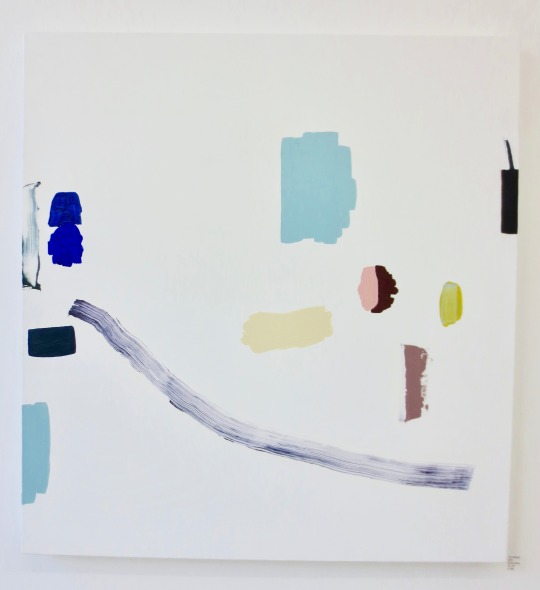
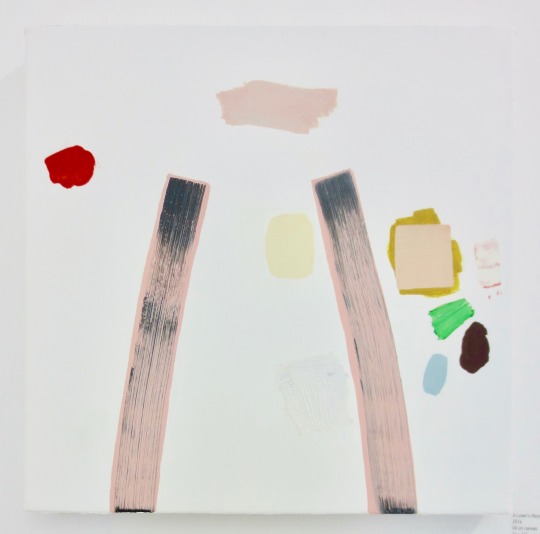
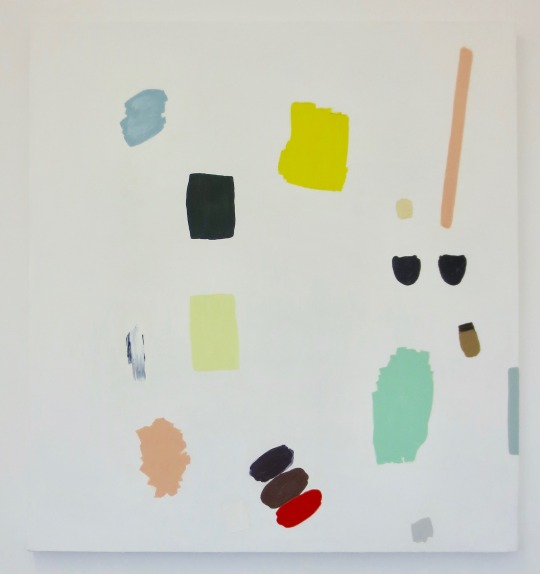
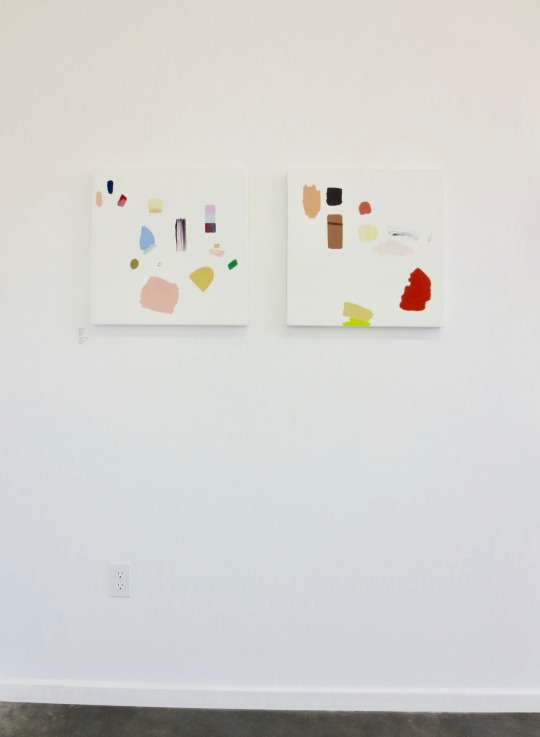

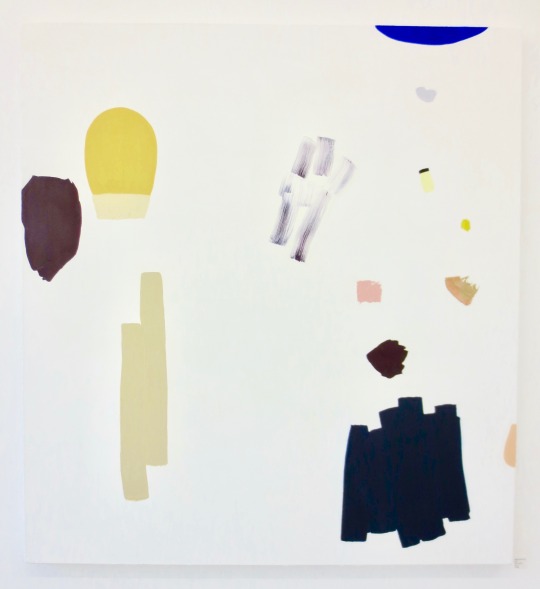

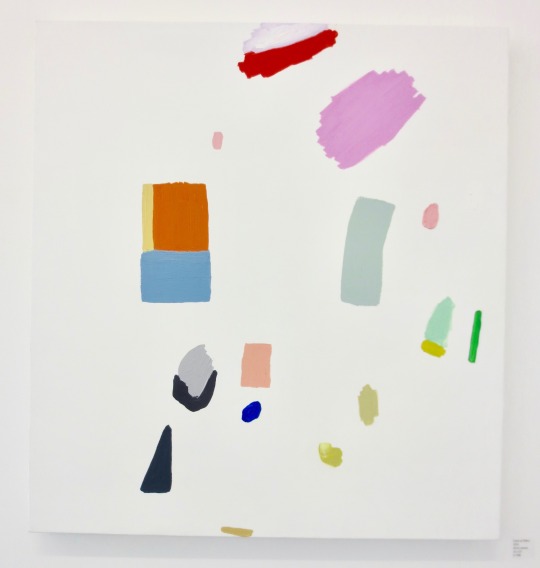
Amy Bernstein, A Lover’s Race at Nationale
http://www.nationale.us/
27 notes
·
View notes
Text
Carson Ellis | la vista | Nationale
Carson Ellis | la vista
February 10 through March 13, 2018
Artist reception: Sunday, February 11, 2018, from 3—5 PM
NATIONALE hours: Thursday—Tuesday from 12—6 PM, closed Wednesdays
EXHIBITION INFORMATION
Following one’s heart, and harnessing and acknowledging one’s artistic strengths—in Carson Ellis’s case, that she is first and foremost an illustrator—is a maker’s most valuable resource. This strength Ellis embodies to the fullest with her upcoming solo show, La Vista, her fourth at Nationale. The pieces presented here are a combination of her versatile oeuvre, pulling on her skills as illustrator and artist alike. Done in ink, gouache, pencil, and ballpoint pen on paper over the past five years, this powerful amalgamation of sketches and drawings highlight the very essence of Ellis’s artistic process.
Ellis vows to someday take a long break from her commitment as an illustrator (mostly of children books and as the band The Decemberists’ artist in residence) and make a series of massive landscape paintings. In the meantime, she makes it an effort to create little drawings and paintings that aren’t illustrations whenever she can. “Personal work”, if you will. Ellis draws on trains and in hotel rooms while on book tours—in fact, a large inspiration for the subject matter and presentation for this group of drawings is drawn from such train rides and a state of perpetual motion. And with kids, a mother will never stop moving. Ellis makes pictures with her family at the dining room table. She experiments with inks between other projects. She sketches en plein air. She claims, “If I didn’t somehow eke out time for this, I wouldn’t be able to appreciate how magical and lucky my main gigs are, and I’d never evolve as an artist”. This harmonizing between professional work and personal work is crucial and critical to what she does. And La Vista is precisely that, a small portion of a larger heap. Myriad media and subject matter might be represented here, but all the work chosen felt of a piece to the artist, intimate and sincere. Here’s to hoping it does to you, too.
ARTIST INFORMATION
Carson Ellis is an illustrator, author, and artist living just outside of Portland, OR. She has illustrated numerous books, including The Mysterious Benedict Society by Trenton Lee Stewart and The Composer Is Dead by Lemony Snicket. She's the author of the bestselling books Home and Du Iz Tak? (a Caldecott Honor book and E.B. White Read-Aloud award winner). Ellis has also collaborated with her husband Colin Meloy on the award-winning Wildwood series and most recently on The Whiz Mob and the Grenadine Kid, as well as with her son Hank on a series about aliens for the People’s Biennial at the Museum of Contemporary Art Detroit. She is a two-time recipient of the Silver Medal awarded by the Society of Illustrators. Throughout the past decade and a half, she has exhibited original artwork in Portland, OR, at PDX Contemporary Art, Basil Hallward Gallery, Motel, and Nationale, where she is represented.
0 notes
Text
Jennifer Brommer | Memphis | Stumptown (Downtown)
Jennifer Brommer | Memphis
Curated by May Barruel
February 1 through March 28th, 2018
Opening reception: Wednesday, February 7, 2018, from 5—7 PM (with music by Action Sound)
EXHIBITION INFORMATION
Growing up between two parents in both Memphis and NYC, Brommer’s world was juxtaposed between living in seedy and gloomy hotels—such as The Chelsea—with her mother and observing her grandmother’s world in Memphis filled with country clubs, maids, and chauffeurs. The project Memphis developed when she decided to explore her own discomfort in the world of her grandmother. She became intrigued with the importance her Memphis family placed on projecting a sense of wealth and social grace. Their notion that your home, car, and appearance were of the utmost significance ultimately drew her to photograph people in their home environment, and investigate the role personal objects play in the identity of her subjects.
ARTIST INFORMATION
Jennifer Brommer is a fine art photographer currently living and working in Portland, OR, and Brooklyn, NY. She received her MFA from The San Francisco Art Institute and her BFA from School of Visual Arts. Her work has been shown at The Brooklyn Museum, The San Francisco Foundation, and Anthology Film Archives among others. She can usually be found around 11 am drinking lots of coffee at the Stumptown on Division.
May Barruel is the fantastic brain behind Nationale, a multifaceted art space dedicated to the promotion of culture through exhibitions, performances, and a selection of carefully chosen goods. She is also a long-time Human of Stumptown. Originally from France, she joined our family in 2005 as a barista, became the manager of our Annex and then the art curator of our downtown Cafe in 2007. Her newest project is curating the Stumptown Artist Fellowship, which celebrates its second recipient this month: Jennifer Brommer. They sat down over a cup of coffee to talk about the newest exhibition. Please check out the artist interview here.
0 notes